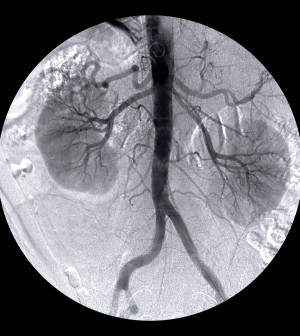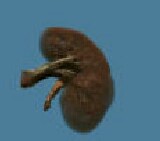- Double Mastectomy May Offer No Survival Benefit to Women With Breast Cancer
- Toxic Lead Found in Cinnamon Product, FDA Says
- Certain Abbott Blood Sugar Monitors May Give Incorrect Readings
- Athletes Can Expect High Ozone, Pollen Counts for Paris Olympics
- Fake Oxycontin Pills Widespread and Potentially Deadly: Report
- Shingles Vaccine Could Lower Dementia Risk
- Your Odds for Accidental Gun Death Rise Greatly in Certain States
- Kids From Poorer Families Less Likely to Survive Cancer
- Tough Workouts Won’t Trigger Cardiac Arrest in Folks With Long QT Syndrome
- At-Home Colon Cancer Test Can Save Lives
Women Increasingly Prone to Kidney Stones


WEDNESDAY, Aug. 28More women are being diagnosed with kidney stones, and the obesity epidemic may help explain the increasing number of cases of this painful condition, a new study suggests.
“Women are becoming more and more obese. Obesity is a major risk factor for developing a kidney stone,” study lead author Dr. Khurshid Ghani, of the Vattikuti Urology Institute at Henry Ford Health System in Detroit, said in a health system news release. “One fascinating thing about women versus men is obese women are more likely to develop a stone than obese men.”
In conducting the study, which was published online Aug. 8 in the Journal of Urology, the researchers examined emergency-room visits that occurred between 2006 and 2009. They identified more than 3.6 million visits for upper urinary tract stones. During the four-year study, the prevalence of kidney stones increased from 289 to 306 cases per 100,000 people.
“While the number of patients visiting the emergency department had increased over that time period, it was women who had the greatest increase in visits,” Ghani said.
Of those included in the study, however, just 12 percent were hospitalized for kidney stones. The researchers suggested that more accurate diagnostic tools could help explain why fewer people are being admitted to the hospital with this condition.
“In the last 10 years, the way urologists manage kidney stone patients in the ER has changed dramatically,” Ghani said. “Today, the emergency-room physician and urologist have access to better diagnostic tools that allow for a more precise diagnosis. We use a CT scan, which is a quick test that allows for an immediate diagnosis and is available in every emergency department.”
Increased use of CT scans to diagnose kidney stones may be one reason the charges for emergency-room visits jumped from $3.8 billion in 2006 to $5 billion in 2009, he added.
“Fifteen years ago, around 5 percent to 10 percent of patients visiting the emergency department for a kidney stone would get a CT scan,” Ghani said. “Today, 70 percent of patients who visit the emergency department get a scan. While they’re wonderful tools of technology that allow an accurate diagnosis, they are expensive.”
Ghani added that some people can pass stones with the help of medication and be monitored on an outpatient basis. Those who are admitted to the hospital for kidney stones often are being treated for related blood infections, which may occur when the stone causes a blockage.
More information
The National Kidney and Urologic Diseases Information Clearinghouse has more about kidney stones.
Source: HealthDay
Copyright © 2024 HealthDay. All rights reserved.










